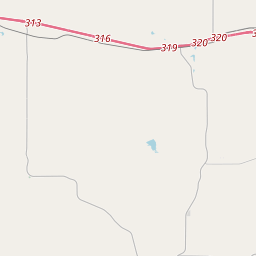First United Methodist Church of Cisco
Historical marker location:






The Rev. Lamb Trimble, a Methodist circuit rider, organized this church at Red Gap (two miles west) in 1880. The four charter members met in the home of M.V. Mitchell, a sheep rancher. The congregation moved to Cisco one year later when the city was founded. Services were held in the schoolhouse until 1883 when the members built a sanctuary on this site. A company purchasing right of way property for the railroad donated the land. An 1889 building program, completed during the pastorate of the Rev. T.C. Ragsdale, doubled the size of the structure and added a parsonage. Both buildings were destroyed in 1893 when a tornado struck Cisco killing 23 people and injuring 93 others. Members formed a rebuilding committee and a larger sanctuary and parsonage were constructed, complete with electric lighting. The population growth of Cisco during the Eastland County oil boom made the sanctuary obsolete, and in 1919 work began on a new church building. The Rev. Lewis N. Stuckey conducted the first services when the edifice was dedicated late in 1920. On two separate occasions Cisco headed a district for the Central Texas Methodist Conference until consolidation with Brownwood in 1974. (1980)
As one of the most visible programs of the Texas Historical Commission (THC), historical markers commemorate diverse topics in Texas history, including: the history and architecture of houses, commercial and public buildings, religious congregations, and military sites; events that changed the course of local and state history; and individuals who have made lasting contributions to the state, community organizations, and businesses.
The Texas Rangers, a famous law enforcement agency, were first organized in 1835 to protect settlers from Native American attacks.
The county's official establishment came in 1858, when Texas Legislature recognized it as a separate entity. The county was named after William M. Eastland, who fought in the Texan Revolution and served as a Texas Ranger. During the late 19th and early 20th centuries, Eastland County experienced significant growth and development thanks to the arrival of railroads, making it a crucial transportation hub for the surrounding regions.
The discovery of oil in the early 20th century also brought prosperity to Eastland County. The oil boom led to a population increase, as well as the growth of industrial and commercial sectors. However, the Great Depression of the 1930s had a devastating impact on the county, leading to a decline in population and economic activity.
In recent decades, Eastland County has worked to revive its economy and preserve its rich heritage. Today, the county is known for its thriving agricultural sector, including cattle farming and crop cultivation. The county also attracts tourists with its natural beauty, offering outdoor recreational activities such as fishing, hunting, and camping. Eastland County continues to embrace its history while looking towards a promising future.
Eastland County Timeline
This timeline provides a concise overview of the key events in the history of Eastland County, Texas.
- 1850 - Eastland County is established as a county in Texas.
- 1854 - The town of Palo Pinto is designated as the county seat.
- 1858 - Palo Pinto is abandoned, and the county seat is moved to Merriman.
- 1875 - Merriman loses the county seat status to Eastland.
- 1890 - The Texas Central Railroad arrives in Eastland, fueling growth and economic development.
- 1907 - The first oil well in Eastland County is drilled, leading to the rise of the oil industry in the area.
- 1920 - The Eastland City Dam is built, creating Lake Leon and providing a water source for the region.
- 1930 - The population of Eastland County reaches its peak, with over 30,000 residents.
- 1938 - Eastland County is severely affected by the devastating tornado outbreak known as the "Wichita Falls–East Texas Tornado Outbreak."
- 1950s - The decline of the oil industry and changes in agriculture lead to a population decrease in Eastland County.
- Today, Eastland County is a rural area with a diverse economy, including agriculture, oil and gas production, and tourism.